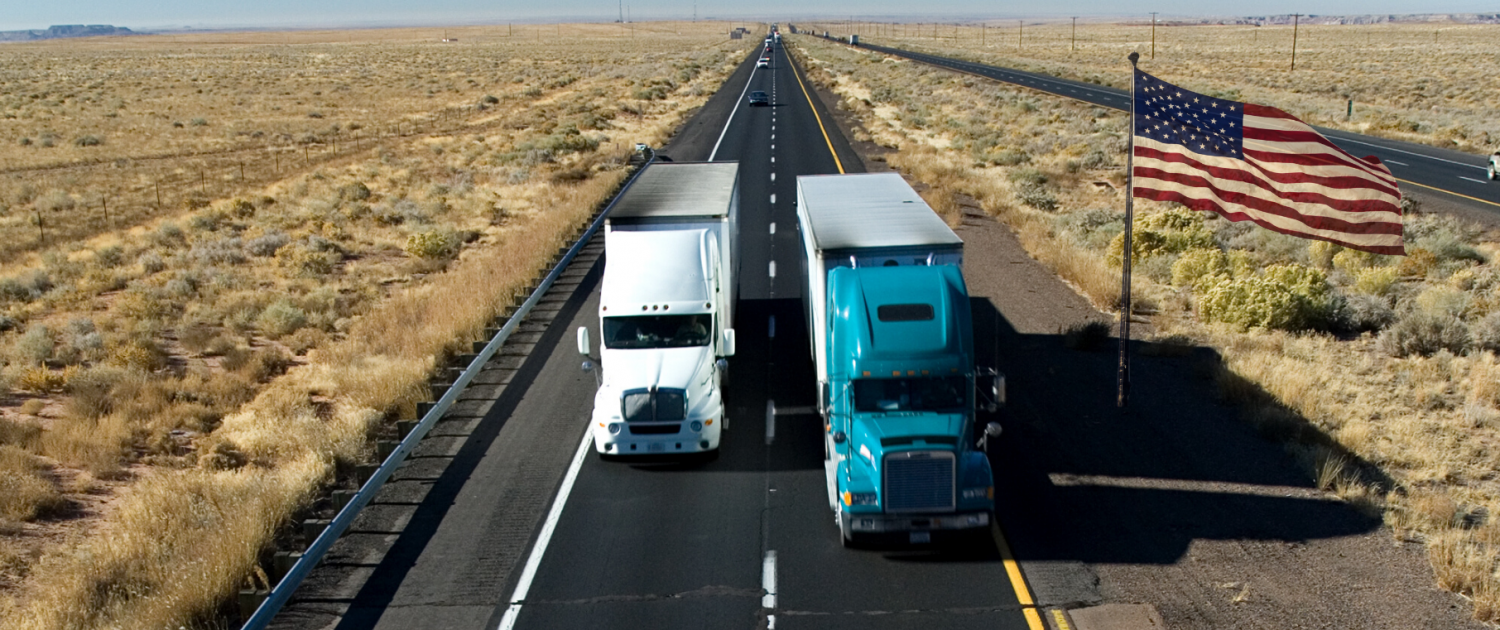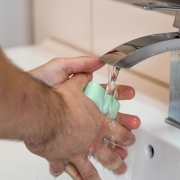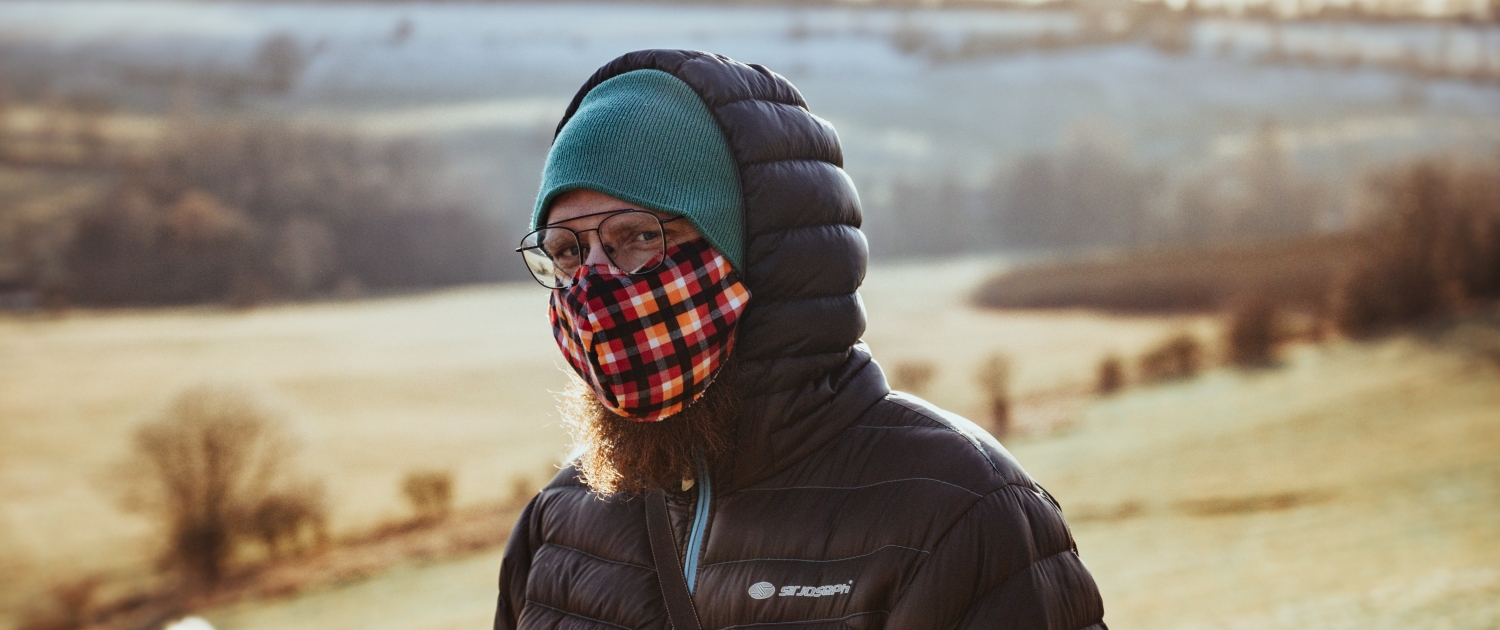
Cleaning supplies are hard to come by these days. Go to most grocery stores, and you’ll have a hard time finding disinfecting wipes, hand sanitizer, or protective face masks. For Americans staying home, that’s inconvenient, but soap, water, and some good old’ fashioned elbow grease will do the trick. For essential workers like truck drivers, going without these supplies is a significant health concern. Now, in some states, it’s also illegal.
There is a lot of conflicting information being shared among the trucking community about face masks for truck drivers. When in doubt, the best thing you can do is to ask your company about their policies and what resources they offer. However, especially if you are driving OTR, it may be helpful to be familiar with the policies in multiple states. Here’s what you should know about face masks for truck drivers during COVID-19.
When to Wear a Face Mask
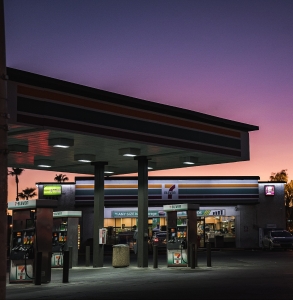
COVID-19 spreads most dramatically through person to person contact. Any time you are near other people, try to put 6 feet of distance between yourself and the other person. In any situation where it is difficult to maintain socially distancing practices, the Center for Disease Control (CDC) recommends wearing a face mask.
For most truck drivers, that means that your risk when you’re alone in your cab is low, but a mask may still be required. Whenever you make contact with others, a mask is a must. That includes pumping fuel, going into a truck stop or gas station, picking up food, and being at a shipper/receiver.
Geographies with Specific Rules
There are some situations where you are required by law to wear a face mask. International border crossings are one of those times. If you are traveling between the United States and Canada or between the United States and Mexico, you are required to wear a mask for border crossings and while in transit. If you do not show any symptoms, you will typically be able to continue your route. However, if you display any symptoms, you may be required to stay in quarantine for 14 days.
Similarly, in many of the states in hard-hit regions, truck drivers are required to wear a non-medical face mask. The penalties for failing to wear protective face equipment range from large fines to imprisonment.
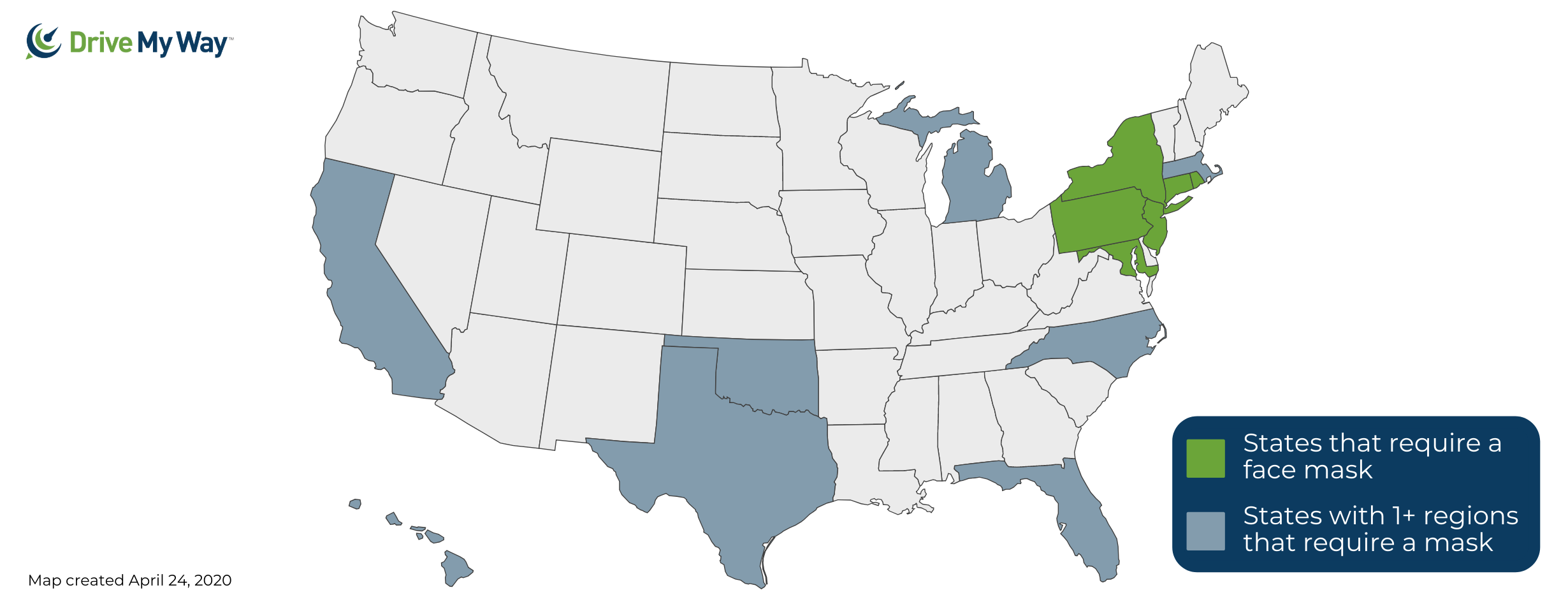
As of April 24, the states that legally require truckers to wear a face mask include Connecticut, New York, Maryland, New Jersey, Pennsylvania, and Rhode Island. In addition, several states have cities or regions that require a face mask.
States with at least one region requiring a face mask include North Carolina, California, Texas, Florida, Hawaii, Michigan, Oklahoma, and Massachusetts.
As we understand more about COVID-19 and ways to reduce spread, mask regulations are becoming stricter. The list of states who legally require a face mask is likely to grow. To be confident that you are always within regulations, follow the CDC recommendation to wear a mask at all times when you are in public.
Types of Face Masks
When face mask regulations are passed for truckers, you don’t need a medical-grade face mask. In fact, you’re expected not to. The best types of face masks are N95 respirators and surgical masks. Both of these types of masks are currently in short supply and are reserved for medical professionals. As a driver, you have a few other options that will help keep you safe and healthy.
Bandanna or Similar Face Coverings
This is a great quick-fix option for drivers. A bandanna is easily folded and tied to cover your mouth and nose. It’s not medical quality, but it’s better than nothing and will slow the virus transmission.

DIY Masks
You’ve probably already seen people wearing DIY face masks in everything from plain colors to crazy patterns. The beauty of a DIY version is that there are many effective ways to make one, and most people already have the materials needed.
Cotton is the recommended material for face masks because it is a tight-knit fabric that reduces virus transmission. You can get cotton fabric squares, but an old t-shirt will also do the trick. The key to a good mask is multiple layers. The face mask should fit snugly but allow breathability. You can make a no-sew mask following this video from the U.S. Surgeon General, Dr. Jerome Adams. The CDC also has recommendations and instructions for a sewn version of the mask.
Get the most out of your face mask
When used correctly, a cloth face mask can help reduce the spread of COVID-19. In order to make sure you get the maximum benefit, wash your mask regularly. A washing machine is effective in sterilizing the fabric. Wash your hands before and after you put on or take off a mask, and avoid touching your eyes, nose, or mouth in the process.
The Bottom Line
The regulations for face mask requirements are changing rapidly. At a minimum, the CDC recommends that all Americans wear a mask in public. As a truck driver who travels between several locations, it’s best to be prepared. Keep a mask in your cab and plan to wear it when you go outside.
STAY UPDATED ON INDUSTRY TRENDS AND BEST PRACTICES
Join our community of over 150,000 drivers who receive our updates.

